Brac Island: Unmissable Coastal and Inland Destinations
July 18, 2022 - Brac island already has a solid reputation and may not need more advertising, but for those curious who want to see the island beyond Zlatni rat (Golden horn), here are some must-see destinations.
Brac island is the highest and third largest among the more than 1,000 Croatian islands, and it is thanks to this vast territory that it has numerous and varied destinations to visit. While it is true that Brac island has become popular in recent years thanks to the highly recognizable Zlatni Rat in Bol, it would be unfair to reduce such an island to just one beach. It could be said without hesitation that Brac island has something for everyone, from olive oil to adventure sports. The island has spectacular hiking trails, interesting towns both on its coast and inland, and even a museum dedicated exclusively to olive oil.
Due to its proximity to the Croatian mainland, specifically to the City of Split, Brac island is easily reachable by ferries and catamarans, as well as with small boats that offer daily tours. The main ports of the island are Supetar (from Split), Milna (from Split), Bol (from Split and Dubrovnik), and Sumartin (from Makarska). If you plan to visit Brac island via any of these ports, consider checking out these destinations.
Supetar
If you find yourself vacationing in Split, especially in the south of the city, it is difficult not to recognize Supetar from a distance. It is undoubtedly the best reachable destination from the Dalmatian city due to the high frequency of ferries that take you to Supetar from the port of Split. However, this does not stop it from being a town that deserves all your attention. Supetar has many cultural events, and numerous beaches to choose from. It also serves as a starting point for various themed trails on the island, including Via Brattia, which you can learn more about here.
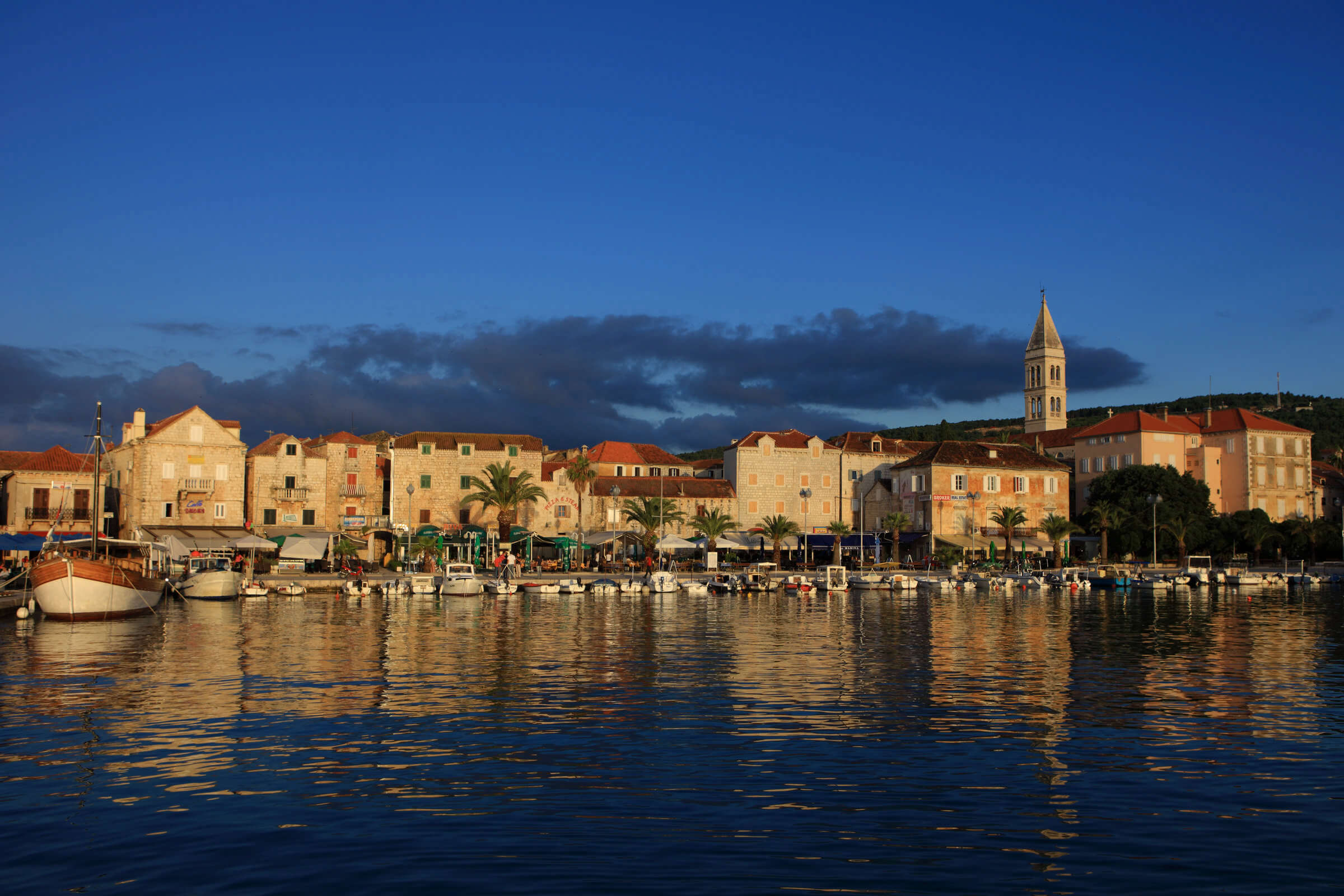
Photo: Mario Romulić
Sutivan
Just 13 minutes by car from Supetar, Sutivan lies on the northwest coast of the island of Brač. It is a small picturesque destination with a Mediterranean vibe and beautiful pebble beaches stretching west. Numerous cultural landmarks, various events, and sports activities make it a good place for a pleasant vacation. Despite having its fair share of beaches, another great way to spend your time in Sutivan is learning about its diverse religious heritage, by visiting St. Rocco's Church or St. John's Church. Likewise, Sutivan is a friendly town for bicycles, in addition to having trails both by land and also for diving.
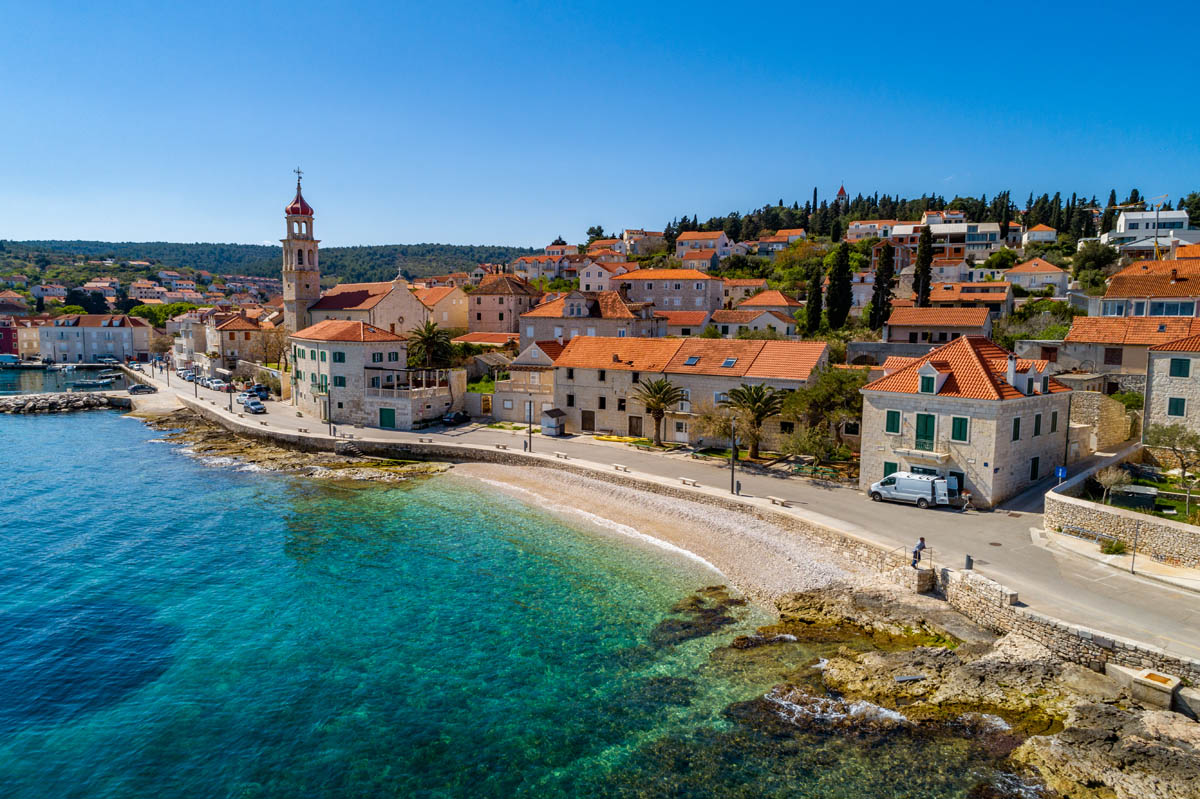
Image: Sutivan Tourist Board
Splitska
East of Supetar is Splitska, just a 9-minute drive away. Splitska is a settlement developed in the 16th century, after the foundation in the 13th century was destroyed by pirates from Omiš. Historically, the stone of Brač was transported from the port of Splitska, which was used to build Diocletian's Palace in Split. Splitska is a small and quiet place, ideal for families and travelers looking for a peaceful vacation.
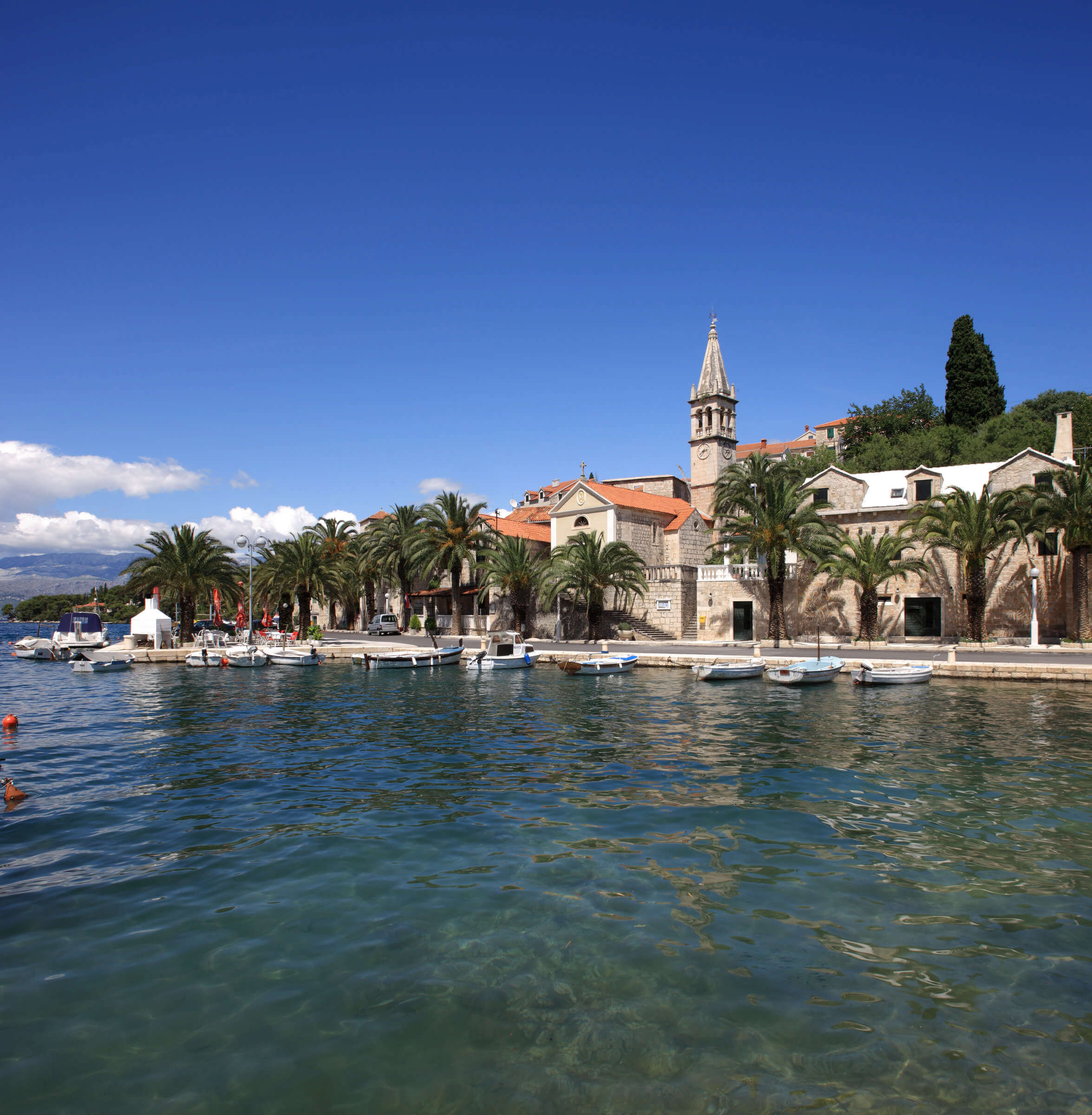
Photo: Mario Romulić
Postira
Postira, located 7 minutes east of Splitska, is a town founded in the 16th century and today has a great tourist offer that successfully unites its agricultural and fishing traditions. In addition to having a wide variety of beaches and accommodations, Postira definitely stands out for its countless activities to do, since Postira is home to the World Olive Picking Championship. Yes, you heard it right. During the fall, in the olive picking season, teams made up of people from all over the world gather in Postira to compete against each other to see who picks the most olives. You can learn more here.
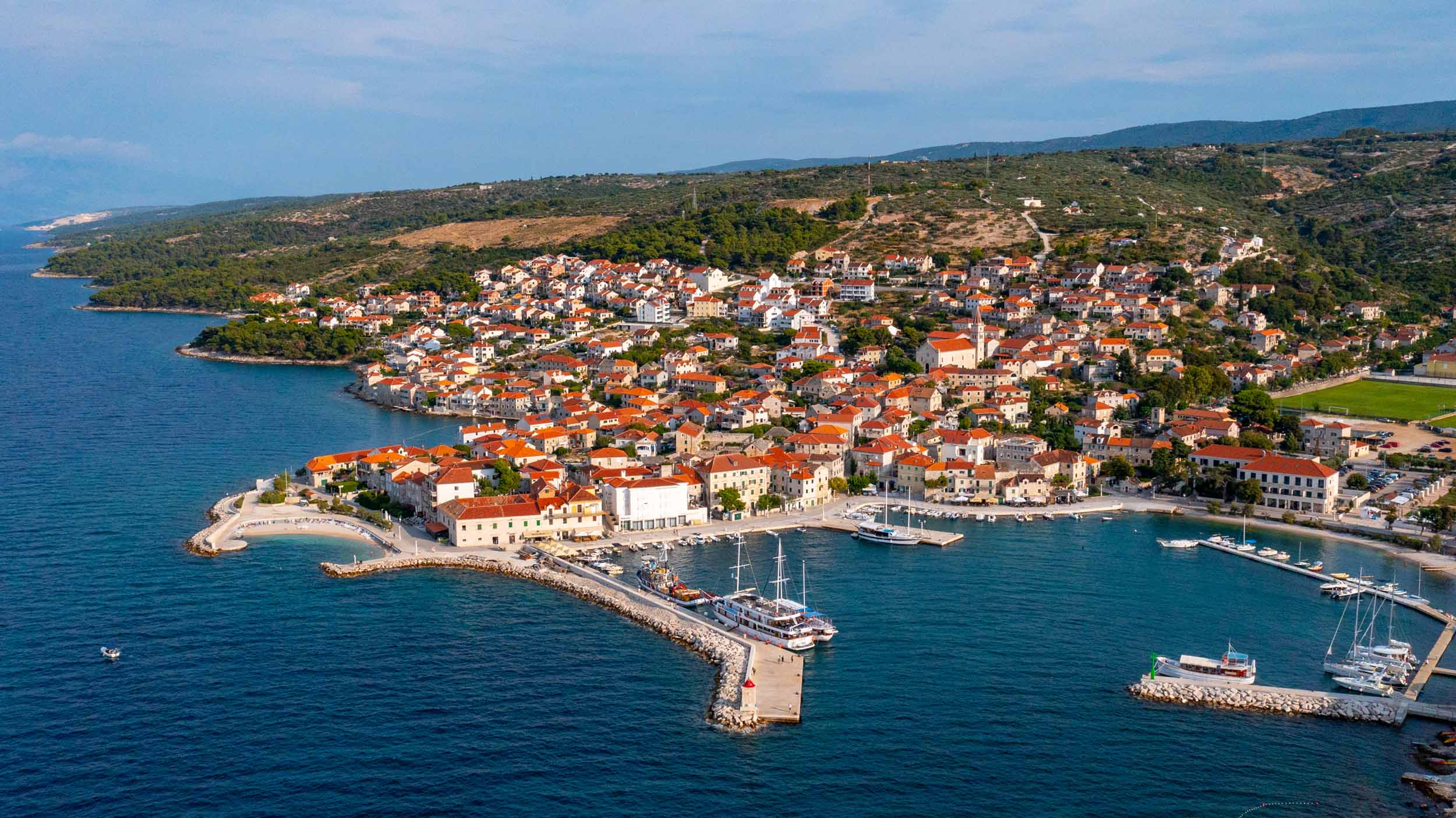
Image: Postira Tourist Board
Pučišća
This list is of destinations that you cannot miss, but there are some destinations that you simply cannot miss. For me, one of those destinations is Pučišća, on the northeast coast of Brač. Pučšića is the largest settlement on the island of Brač, and is known not only for its picturesque buildings but also for the stonemasonry tradition of its famous school, the best examples of which are erected throughout the town, visible also in its beautiful harbor. Pučšića is an excellent destination to spend relaxing days, where you can enjoy beautiful beaches, spectacular local food and top quality olive oil.
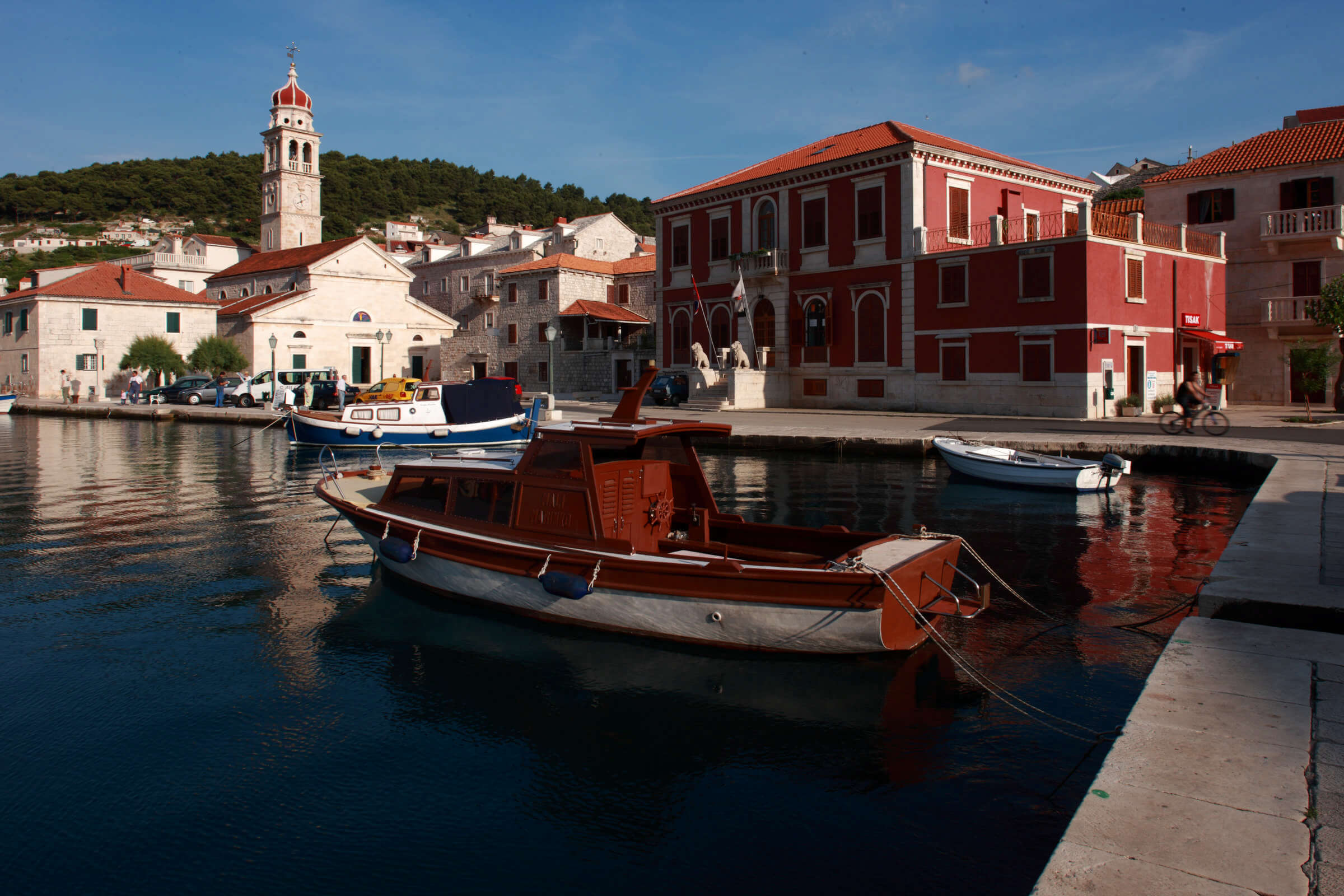
Photo: Mario Romulić
Povlja
This picturesque village exudes peace and quiet and is ideal for a vacation away from the hustle and bustle of the larger tourist destinations on the island. Povlja is surrounded by numerous bays, ideal for enjoying the abundant sun and crystal clear sea. Don't forget to visit one of the most spacious sacred buildings of its kind in Croatia, an early Christian basilica with a baptistery from the 6th century. Two legends are associated with Povlja. It is believed that St. Jelena, the mother of Emperor Constantine the Great, was originally from Brač and was taken to Constantinople via Povalje. Another legend says that St. Ivan, who is the patron saint of the place, walked on the sea and drove away the plague with his sermons.
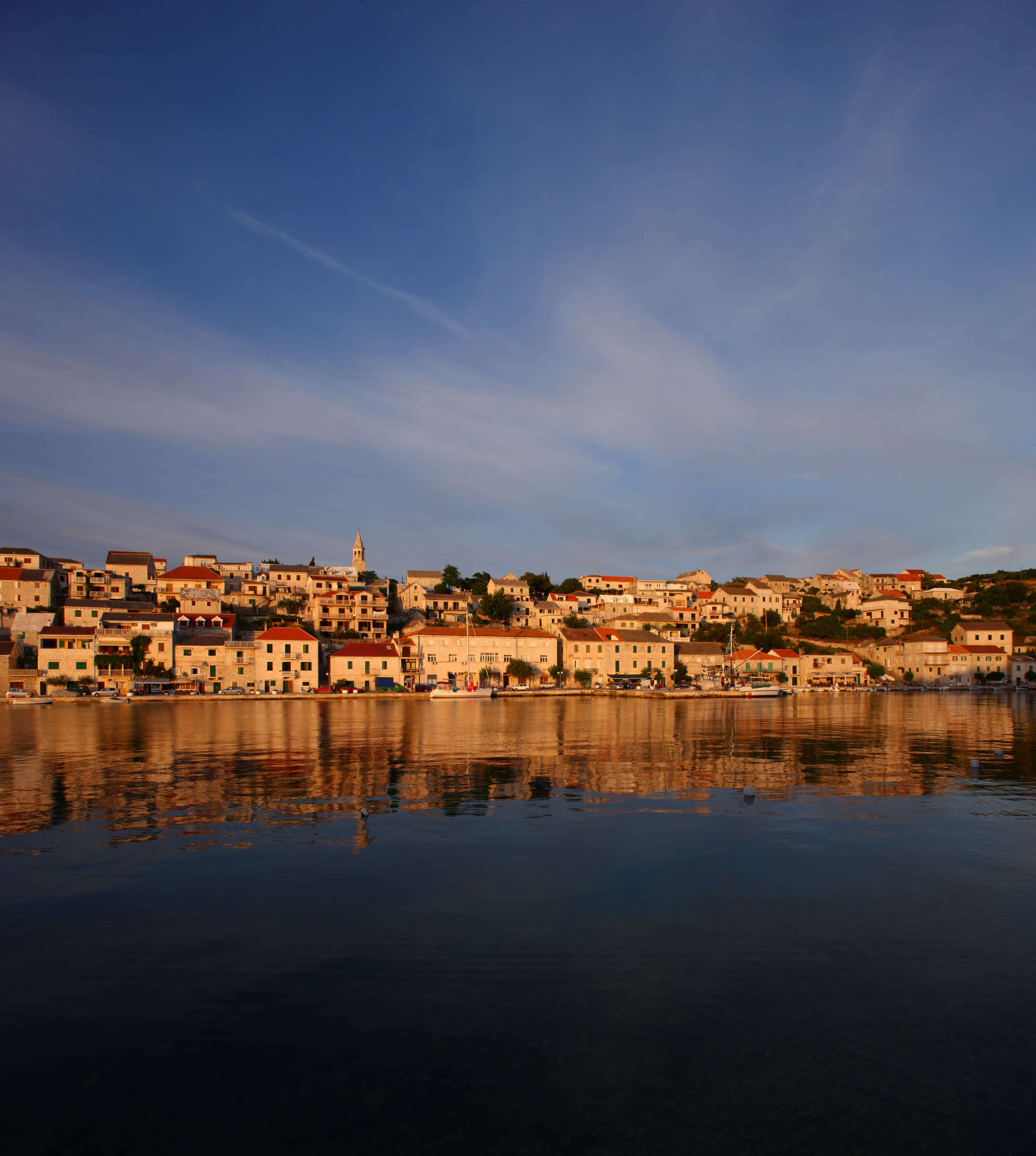
Photo: Mario Romulić
Pražnica
Who says that the only destinations worth visiting on Brač are on its coast? Being the highest island in Croatia is no surprise that its inland hides incredible villages with a lot of history. One of them is Pražnica, a small medieval town, 7 km south of Pučišća. Surrounded by numerous pastures, livestock farming has developed in the village, and rural tourism is also developing nowadays. Many visitors enjoy traditional Brač delicacies here, such as the famous Brač cheese, lamb on a spit, homemade olive oil, and high-quality Brač wines.
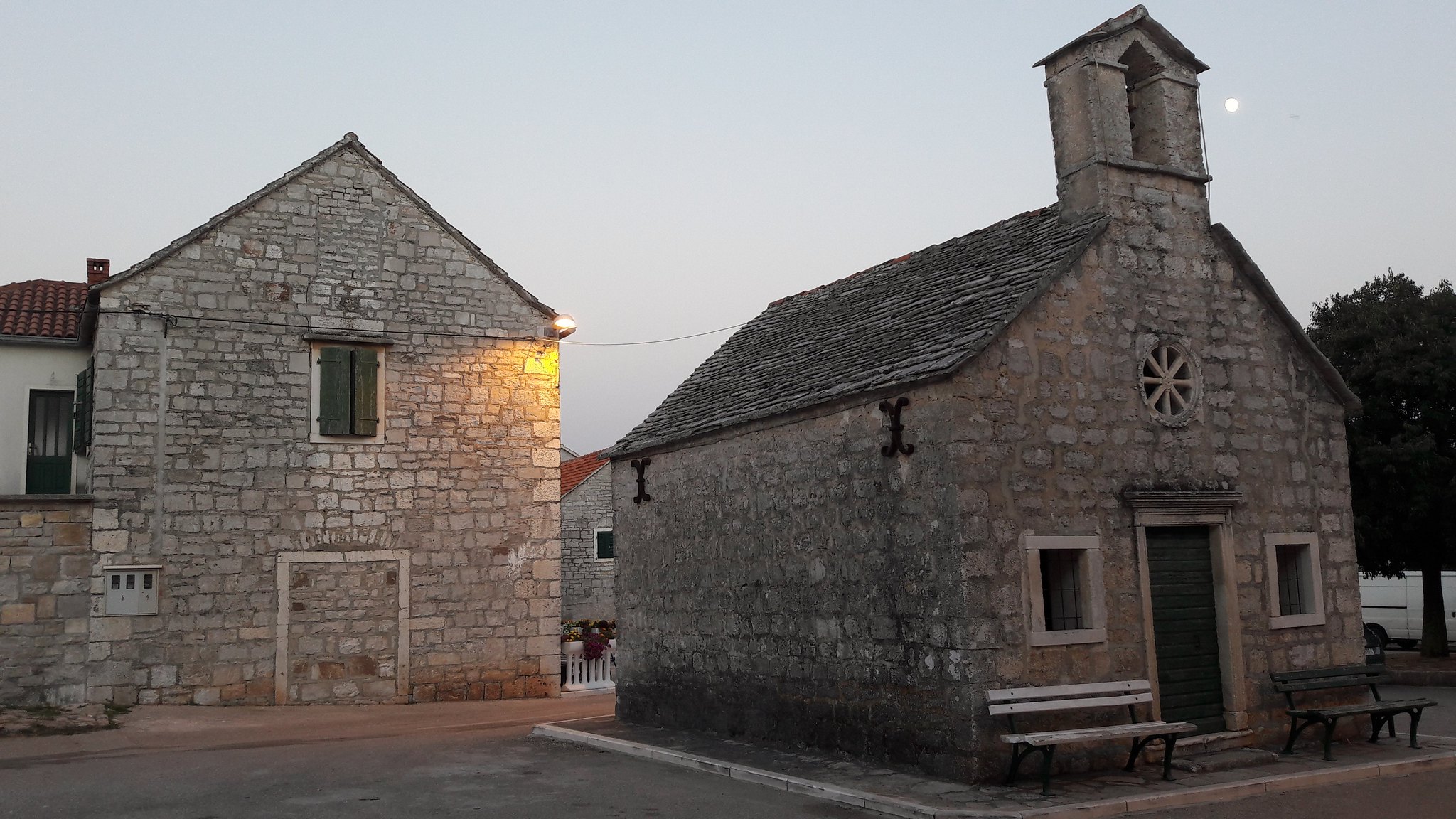
Photo: kruno/Flickr
Nerežišća
Fifteen minutes west of Pražnica, also inland on the island of Brač, the village of Nerežišća is located. As a district, Nerežišća comprises much of the interior of the island of Brač, as well as part of the southern coast of the island. Nerežišća is one of the smaller settlements on Brač, with a population of less than 1,000, but was once the capital of the island, built inland rather than on the coast as protection from pirates who sailed long ago. Nerežišća is an ideal destination to feel closely the rural life on the island, without being far from the paradisiacal beaches. An unmissable landmark is a chapel with a bonsai, located in the center of town.
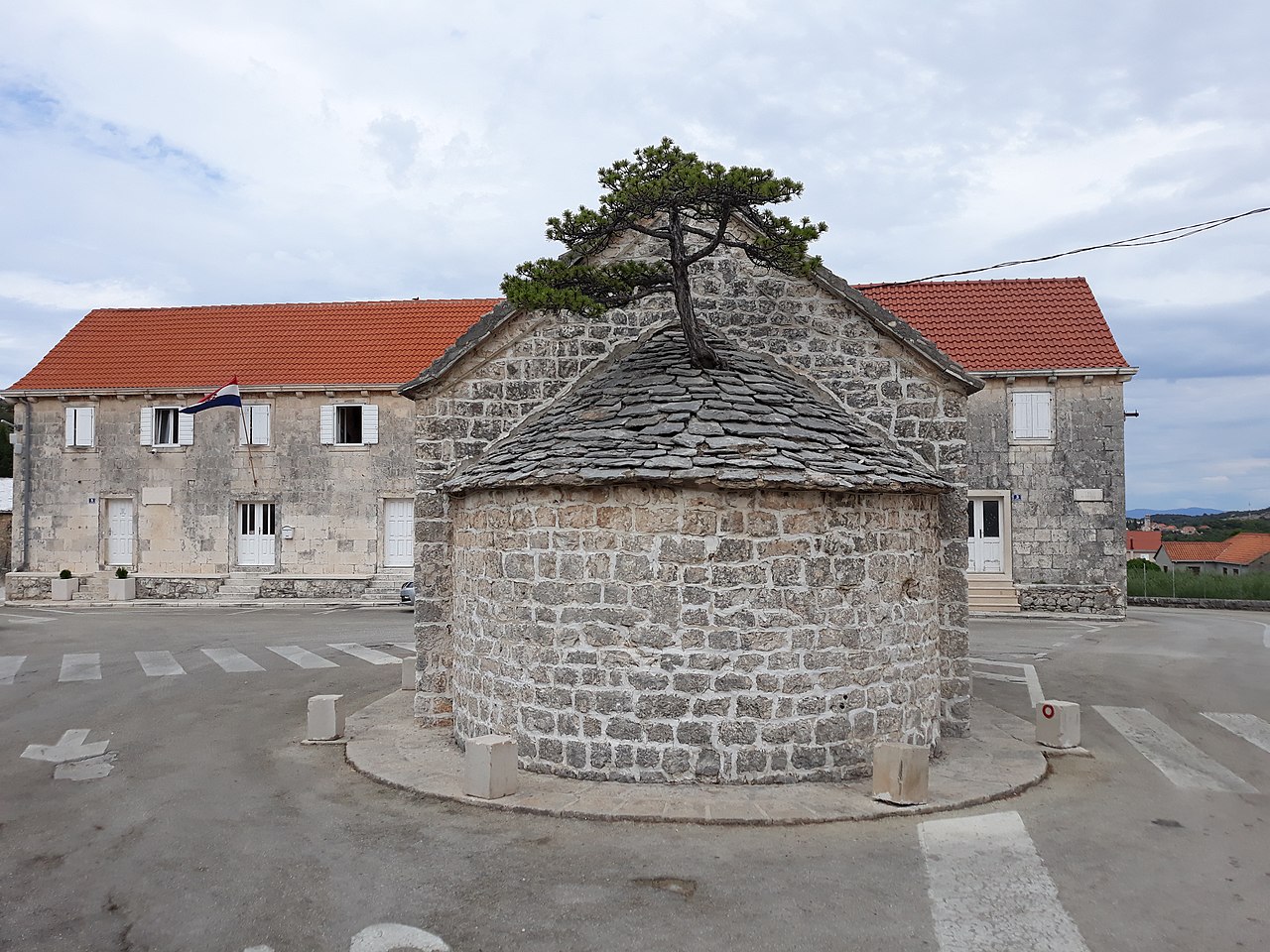
Photo: Argo Navis/Wikimedia Commons
Sumartin
Located on the easternmost point of the island of Brač, Sumartin is an increasingly popular tourist destination. It is also the youngest settlement on the island, which was founded by settlers from the mainland in the 17th century fleeing the Turkish invaders. Aside from its popular and beautiful beaches, you'll find numerous coves and hidden beaches that can only be reached by boat. Fans of active tourism will surely enjoy exploring the hiking and biking trails that lead through ancient olive groves and vineyards, offering unique Mediterranean scenes. Sumartin is a popular destination not only for those already on the island of Brač, but also for those in the Makarska Riviera, as both towns are directly connected by a ferry line.

Image: Selca Tourist Board
Milna
Milna, located on the western tip of the island of Brač, is perhaps one of the most popular destinations, not only due to its connection by catamaran from the port of Split but also because it is a beautifully hidden bay with numerous coves and beaches, protected of storms in the region. With an identity strongly marked by its fishing and sailing traditions, Milna is today a popular destination for tourists during the summer season. If you are looking for spectacular events, you will not want to miss the Mrduja Tug of War, an event that takes place every last Saturday of July, where the inhabitants and guests of the islands of Brač and Šolta compete to define who owns the islet of Mrduja. Learn more here.
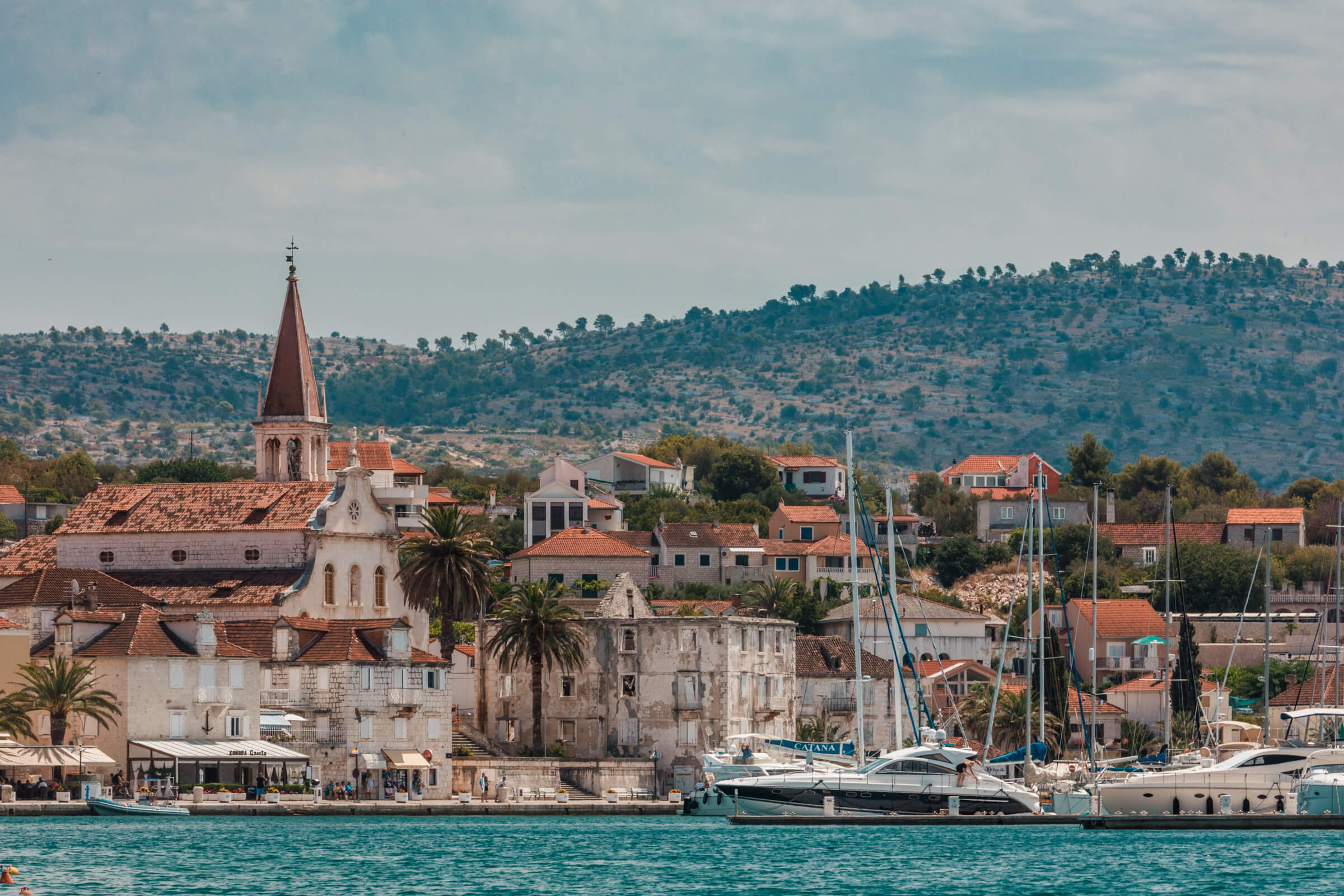
Photo: Mario Romulić
Bol
Bol, what else can be said about this destination that is not already known? Well, believe it or not, a lot. Known worldwide for its spectacular and beautiful beach, Zlatni Rat, Bol has an endless offer of experiences for all types of visitors. Being the oldest settlement on the coast of the island of Brač, the heritage that can be found in the village is a matter of wonder for those history buffs. Likewise, its beaches are praised by windsurfers and kitesurfers alike. Bol is located on the southern coast of the island and is reachable not only from Split and Dubrovnik but also for those looking to do a bit of island hopping, with the possibility of traveling from Hvar as well.
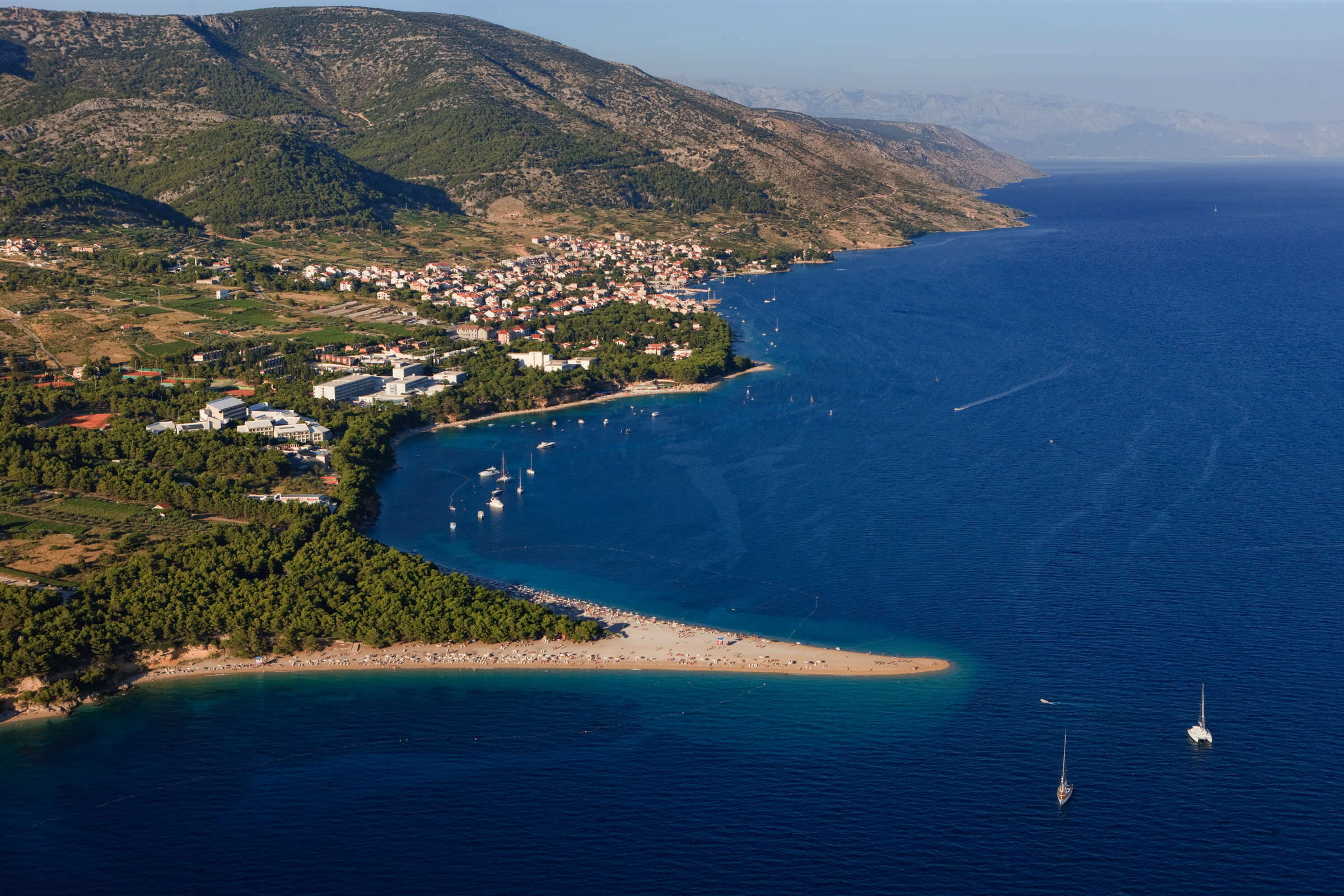
Photo: Mario Romulić
Murvica
Also on the south coast of the island of Brač, 6 kilometers west of Bol, our last unmissable destination is located: Murvica. Although it contrasts with other destinations mentioned in this list, due to its small size (Murvica has a population of just over 20 inhabitants), it is absolutely worth being included in your itinerary, since you will not only find beautiful beaches, but also the Dragon's Cave, whose incredible stone carvings have never been properly explained. Zoran, a very enthusiastic local guide, provides an outstanding experience.

Photo: Mario Romulić
For more on travel in Croatia, follow TCN's dedicated page.
Minister Says Petrol to Cost HRK 13.02, Diesel 13.43 per Litre in Next 2 Weeks
ZAGREB, 18 July 2022 - Economy Minister Davor Filipović said on Monday that for the next fortnight the price of petrol would be HRK 13.02 per litre, down from HRK 13.50, while the price of diesel would go up from HRK 13.08 to HRK 13.43.
Also, fuel prices on motorways and elsewhere will be equated and the government will extend the price cap on blue-dyed diesel to HRK 9.45 per litre for another two weeks, he told the press after a government conference call.
The retail margin stays HRK 0.65 per litre of petrol and diesel, as do excises of HRK 0.80 on petrol and HRK 0.40 on diesel.
"Without these government moves, the price of diesel would have been HRK 15.70 and the price of petrol HRK 14.92," the minister said.
(€1 = HRK 7.5)
For more, check out our politics section.
62 Croatian Works of Art Donated to Ukraine
ZAGREB, 18 July 2022 - A humanitarian campaign for Ukraine by the Croatian Association of Fine Artists' (HDLU) Vinkovci branch wrapped up in the eastern town of Vinkovci on Sunday with an exhibition and the handover of 62 works by 57 artists to the Ukrainian Embassy.
"We are giving these works of art to the Ukrainian people with the wish that they ennoble the walls of two to three schools and one institution in Ukraine, to be selected by the Ukrainians," said HDLU Vinkovci vice president Marko Lončar.
He said the exhibition was called Culture to Culture "because we Croats are giving part of our culture to Ukrainian culture."
He recalled that the campaign began in April with a donation exhibition called "Appeal to Assist Displaced Ukrainians" in Vinkovci, in cooperation with the Croatian Red Cross.
Thankful for the donation, Ukrainian Ambassador Vasyly Kyrylych said Croatia and its people strongly supported Ukraine since the start of the Russian aggression.
"Here in Vinkovci today, we see again that Croats strongly support Ukraine because they experienced and know what it means to defend one's state. We are grateful for that. We are strong in spirit and strong, not in hope, but in faith that we will win because we are defending our country, our homes, our families," he said.
"This is yet another aspect of our assistance to the Ukrainian people, with whom we empathize, confident that they will succeed in winning their freedom," said Vukovar-Srijem County head Damir Dekanić.
For more, check out our lifestyle section.
Croatia Reports 80 New Coronavirus Cases, Two Deaths
ZAGREB, 18 July 2022 - In the past 24 hours, 80 coronavirus cases, out of 628 tests, and two related deaths have been registered in Croatia, the national COVID-19 crisis management team said on Monday.
There are 8,477 active cases, including 514 hospitalized patients, 18 of whom are on ventilators, while 4,127 are self-isolating.
To date, Croatia has registered 1,167,191 coronavirus cases, the death toll is 16,158, and 70.83% of adults have been vaccinated, including 68.80% who are fully vaccinated.
For everything you need to know about coronavirus specific to Croatia, bookmark our dedicated section and select your preferred language if it isn't English.
Conference League 3rd Round Qualifiers: Hajduk, Osijek, Rijeka Learn Opponents
July 18, 2022 - Hajduk, Osijek, and Rijeka learn their possible opponents in the Conference League 3rd round qualifiers beginning early next month.
In the Conference League 3rd round qualifiers, Hajduk Split will play against the winner of the match between Portuguese club Vitória de Guimarães and Hungarian club Puskas Akademia.
Hajduk enters the hunt for its first European autumn after more than a decade and will have a difficult task ahead. Vitória de Guimarães finished sixth in the championship, and the team is full of young internationals - their average age is 23.6. According to Transfermarkt, the value of the team is estimated at 42 million euros, which is slightly more than Hajduk (41.4 million euros).
The last time they competed in Europe was in the 2019-2020 season when they were eliminated in the Europa League group stage.
Vitoria's best player is the young 22-year-old Andre Almeida, who is already a sought-after commodity on the market. Transfermarkt values him at 5 million euros, and reportedly Wolverhampton has already sent an offer of almost 10 million euros for the midfielder.
Puskas is the easier opponent, as several players have left the club, including new Hajduk player Toni Borevković.
The Hungarian club is much smaller than Vitoria, and Transfermarkt estimates them at 12.3 million euros. Jakov Puljić stands out among the better players. They finished third in the championship, 17 points behind Ferencvaros.
Puskas is also known for its fantastic stadium, the Pancho Arena, which was built in 2014 and accommodates 3,816 fans at total capacity.
Osijek and Rijeka could also play in the same stage of the competition if they are successful in the 2nd qualifying round.
If Osijek beats FC Kyzylzhar in the 3rd qualifying round, they can face Bulgarian club Botev Plovdiv or APOEL from Cyrpus. On the other hand, if Rijeka knocks out Swedish club Djurgården, they will play against Romanian club Sepsi Sfantu Gheorghe or Slovenian club Olimpija Ljubljana in the next round of qualifications.
Hajduk will be the host in the first game, and the second leg will be played away, while Osijek and Rijeka will be guests in the first games, and the second legs will be played at home.
The first matches will be played on August 4, and the second leg on August 11.
Conference League 3rd qualifying round
Hajduk - Vitória de Guimarães (Portugal) or Puskas Akademia (Hungary)
Botev Plovdiv (Bulgaria) or APOEL (Cyprus) - Osijek
Sepsi (Romania) or Olimpija Ljubljana (Slovenia) - Rijeka
Dinamo Zagreb also learned their possible opponent in the Champions League 3rd qualifying round and the Europa League 3rd qualifying round.
If Dinamo wins against North Macedonian club KF Shkupi, they will play against the winner of the match between Ludogorec and Shamrock Rovers in the 3rd preliminary round of the Champions League.
If they advance to the 3rd preliminary round, Dinamo will play the first match away on August 2 or 3, while the return match will be played at Maksimir a week later.
If they lose against Shkupi, Dinamo will continue their European journey in the 3rd qualifying round of the Europa League, where they will play against the losers from the same pair, Ludogorec - Shamrock Rovers.
The first match of the Europa League 3rd round qualifiers will be played on August 4, and the second week later, on August 11.
Source: Gol.hr
To read more about sports in Croatia, follow TCN’s dedicated page.
Sibenik Fires: Owners of Destroyed Houses Get Mobile Homes
July the 18th, 2022 - The devastating Sibenik fires which have burned down houses recently have worked to remind us of the dangers of the dry Dalmatian landscape and the extremely harsh rays of the summer sun at this time of year.
While wildfires break out in Croatia, particularly in Dalmatia, at this time of year almost like clockwork, the human cost is always staggering and unfathomable. To lose your house in a blaze and be able to do absolutely nothing about it is incomprehensible to most people, but a rapid response to this has seen families who have lost their homes to the most recent Sibenik fires get mobile homes to move into.
As Morski writes, during the night, prefabricated houses arrived in Zaton and Raslina, two heavily affected areas of the most recent Sibenik fires, for the families who lost their homes to move into. The move currently involves two families, one from Raslina and one from Zaton, and as Boris Dukic, president of the Zaton Local Board, said, one family should be moving into the house today.
''We've now taken the first step, the prefab houses arrived during the night, their connection to the electricity and water supply will follow, and then we'll move on. A family from Zaton, a husband and wife, should move into the house today. People are coming forward and offering us help, and the next step is to take care of these families, to build them a proper, permanent home. Everyone has really got involved and I believe and hope that everything will be resolved in the shortest possible time,'' said Dukic.
A family consisting of a mother with several children was also left without a roof over their heads in Raslina owing to the tragic Sibenik fires, and they should enter their temporary house on Tuesday or Wednesday this week at the very latest.
''We still have to level the ground and everything should be ready by the middle of the week at the latest. As for the renovation of their home, I believe that they'll be able to welcome the winter in a brand new one, because people got involved right away, offering help, we've already solved the installations and the renovation of the roof, which is fifty percent of the work,'' said Marko Lokas, the president of MO Raslina, reports local portal SibenikIN.
On Saturday, a meeting of the Zaton Local Board was held with the heads of the County and City crisis headquarters, Darko Dukic and Danijela Mileta, and with the fire chiefs, where steps were agreed on to report damage to residential and commercial buildings, as well as to agricultural crops after declaring a state of natural disaster following the Sibenik fires.
For more, make sure to check out our dedicated lifestyle section.
100,000 Octopuses Released into Split Waters as Part of Wider Project
July the 18th, 2022 - The Split waters are richer for around 100,000 octopuses in their early phases of development after they were released there as part of a wider project involving them.
As Morski writes, the Split Institute of Oceanography and Fisheries, in cooperation with the Croatian Association for Sport Fishing at Sea, has begun research into the possibility of raising octopuses in their early developmental stages for the purpose of their repopulation.
As part of the research, hundreds of thousands of individual octopus larvae were released into the sea, more precisely into the Split waters. Over the next year, the success of the trial ''re-stock'' of these octopuses, as well as the habitat area of the released individuals, will be fully evaluated.
The octopus is Croatia's largest and most famous cephalopod, which has always been used for food. As the fish catch gradually decreased, cephalopods began to be exploited more intensively, so their value also increased. Today, due to significant demand, octopuses are exposed to intensive exploitation. They are being hunted and caught by almost everyone, from sport and recreational fishermen to professional ones. This inevitably leads to the thinning out of the octopus' precious habitat. The result is not only a lack of octopus for human needs, but also a damaged ecosystem in which the octopus plays a highly important role.
The sustainability of octopus populations can be achieved by reducing the demand for its meat or by strict regulation and increased control during fishing. However, if it isn't possible to achieve sustainability in such a way, what can also be considered is ''stocking'' or repopulation. Preliminary observations point to this possibility, so the Institute of Oceanography and Fisheries, in cooperation with the Croatian Association for Sport Fishing at Sea, launched a study that should define a technical-technological model for the cultivation of octopuses in their stages of early development, and find the best model that will guarantee their success in the Croatian Adriatic Sea.
''Releasing octopus paralarvae into the sea is actually a repetition of the preliminary research started back in the summer of 2019, which wasn't completed due to the coronavirus pandemic,'' noted Dr. Leon Grubisic, the head of the Aquaculture Laboratory of the Split Institute.
With the help of a sports fisherman, before the pandemic, we found two individuals on the island of Čiovo that were released from our laboratory as paralarvae at only a few days old, but this year we hope to get much more precise results,'' added Dr. Grubisic.
Before the experiment was carried out, the condition of the octopus settlement in the wider area of the intervention was assessed, and the parent stock was provided, which spawned under controlled conditions.
''Octopuses live carefree and lay eggs in our pools, the incubation time is about four weeks. During this time, just like in nature, the larvae of crabs hatch and become food for the newly hatched octopuses. With this experiment, we investigated ways of feeding young octopuses with crab larvae and brine shrimp. In nature, 1 percent of octopus larvae survive the larval stage, with this experiment we expect that percentage could be higherm'' said Dr. Grubisic.
Dr. Tanja Segvic Bubic, a senior research associate at the Aquaculture Laboratory, explained how she can recognise if an octopus in the wild is a baby released from the Institute.
''Since it isn't possible to put a visible mark on the octopuses, which could be used to identify them one year after their release, we carried out genotyping of the parents and paralarvae of the octopuses with microsatellite markers. By sampling the biological material of wild individuals and analysing their DNA, we can determine the parental relationship with the octopuses from our pools,'' explained Dr. Segvic Bubic.
The released octopuses should settle in the Split waters for the next year, where they will become part of the wild population. Employees of the Institute will try to find as many octopuses as possible by diving and sample them using non-aggressive methods. However, in order for the results to be as high quality as possible, the Institute and the aforementioned association are hoping for the help of local fishermen who will hunt the octopuses. Exactly two caught octopuses found on Čiovo back in 2019 genetically matched the individuals released in Split six months earlier.
''We know that many fishermen will hunt octopus in the Split waters, so we'd like to invite them to cooperate with us. Before they go out fishing, we will explain to them how to sample a very small piece of the octopus they caught for the purposes of DNA analysis,'' concluded Dr. Segvic Bubic.
For more, make sure to check out our dedicated lifestyle section.
Fast Split-Osijek Train Arrives Late Because Dispatcher Falls Asleep
July the 18th, 2022 - One ''fast'' Split-Osijek train ended up arriving much later than it should have done, and not because of technical issues, but because the dispatcher allegedly fell asleep on the job.
There was another story fairly recently about a train arriving to Zagreb late because the driver simply didn't bother to turn up to work that day, so this shouldn't come as much of a surprise, although you have to admit it's quite amusing.
Croatia isn't really known for its trains being amazing, or even half decent to be perfectly honest. They often arrive late, the system is ancient, and it often seems like what would be an absolutely golden opportunity when it comes to tourism and indeed just regular transport, Croatian trains are lagging more than just a little bit.
As Poslovni Dnevnik writes, according to a report from RTL, the so-called fast Split-Osijek train was left at a standstill at the signal for as long as 42 minutes until the dispatcher finally woke up from his slumber.
The train arrived in front of Sveti Ivan Zabno and stopped at the signal, i.e. traffic light and waited... Some minutes passed, 42 of them in total, and while the dispatcher was sleeping, the train was still sitting and waiting. The aforementioned portal writes that they tried to call the sleeping dispatcher on his mobile phone, but to no avail, until the station master knocked on his door. Even he had to knock for a while for him to wake up from his deep sleep and - finally let the train move forward.
The train thus stood at the entrance signal from 07:40 until 08:22, simply waiting for its instructor to wake up.
Croatian Railways (HZ) has so far only confirmed that the train did indeed come to a halt at the entrance signal of the Sveti Ivan Zabno station, but they didn't want to comment on what exactly happened, obviously with good reason, so an inquiry was also sent to Sveti Ivan Zabno station.
"On July the 17th, 2022, from 07:54 to 08:20 on the L214 Gradec-Sveti Ivan Zabno line, Split-Osijek train 1783 stopped for 26 minutes at the entrance signal of the Sveti Ivan Zabno station. The reason for the train stopping was a personal mistake by the train dispatcher working at Sveti Ivan Zabno station. Due to the above, the proper procedure will be conducted against the aforementioned worker in accordance with the Labour Regulations and the Collective Agreement of HZ Infrastruktura d.o.o. The worker will be warned in writing about this omission with the possibility of terminating his employment contract. In addition to the above, the worker is being referred to the Commission for Damages due to the delayed train," the station announced, adding that the worker was not intoxicated on the job.
They admitted, therefore, that the Split-Osijek train was delayed due to an oversight by the aforementioned worker, but they didn't admit that he fell asleep. But what about the passengers and their rights in such situations? There were 96 of them sitting on the train.
"According to EC Regulation number 1371/2007 on the rights and obligations of passengers using rail transport, the passengers are entitled to compensation for delays in the following cases - for delays of 60 to 119 minutes, compensation is paid in the amount of 25 percent of the ticket price, and for delays longer than 120 minutes, compensation is issued to pay for 50 percent of the ticket price", Croatian Railways told RTL.hr.
For more, make sure to check out our dedicated lifestyle section.
2022 Trogir Tourist Results Significantly Better Than Those from 2019
July the 18th, 2022 - The 2022 Trogir tourist results so far have been excellent, so excellent in fact that they have outdone the results thid Dalmatian town acheived back in the pre-pandemic, record year of 2019.
As Morski writes, despite all the adversity and inflation, the 2022 Trogir tourist results so far have been much than those recorded back during the record-breaking year of 2019. In the first ten days of July, a difference of about 5 percent has been noted. Next week, when the internationally recognised Opera Selecta ends, even better results are expected.
Not even the scorching hot sun can stop the hordes of guests flocking into this Croatian UNESCO city, but that doesn't mean there aren't many people still worried about the high prices as a result of ongoing inflation pressures.
''Over the first ten days of this month, we recorded a 6 percent increase in terms of overnight stays and a 5 percent increase in terms of arrivals when compared to the first ten days of July 2019,'' said Marin Piveta, the director of the Trogir Tourist Board.
Trogir is currently playing host to many different types of events which are succeeding in attracting new guests, and the famous Opera Selecta, as a cultural brand of the city with its mega-stars of classical music, is a real magnet for the audience.
''We are especially happy and proud that this year, for the first time, we brought the world-famous soprano Olga Peretyatko to the Republic of Croatia, who will perform in the Kamerlengo Tower on July the 20th,'' said Vinko Buble, president of the "Opera Selecta" Association.
When it comes to the 2022 Trogir tourist results, while already extremely encouraging, everything would be even better if the Scandinavian airlines hadn't started cancelling their flights due to staff strikes as we head into the middle of the very height of the summer tourist season. Owing to this unfortunate event, many would-be tourists from that part of Europe, including Swedes and Norwegians, ended up getting stuck with their luggage at their airports.
About 30 percent of Scandinavians have already cancelled their trips, but most of them still embarked on their adventure, deciding to hit the road instead and drive the long 2,500 kilometres down to the Croatian Adriatic. Their numbers still aren't really so large that they'd would affect the great tourist results being acheived already by Trogir, but after two years of stress due to COVID0-19, travel agencies have once again run into problems, writes HRT.
For more, make sure to check out our dedicated travel section.
SuperSport HNL Round 1: Dinamo, Rijeka, Osijek, Hajduk Open New Season with Wins
July 18, 2022 - The new Croatian football season opened on July 15 after a month of preparations. A look at the SuperSport HNL round 1 results.
Dinamo v. Lokomotiva (3:2)
Dinamo and Lokomotiva opened the first round on Friday, July 15, at Maksimir Stadium in front of 4,320 fans.
Kulenovic and Ibrahim put Lokomotiva ahead by two goals by the 22nd minute, though it didn't last long. Dinamo subbed on Drmic, who scored two goals in the next 10 minutes for 2:2 at the half. Maric was shown a red card in the 78th minute, forcing Lokomotiva to play with a man down for the remainder of the match. Menalo scored in the 91st minute for the final 3:2 Dinamo.
Dinamo is currently in 2nd place with 3 points, while Lokomotiva is in 6th with 0.
Osijek v. Gorica (2:1)
Osijek and Gorica met on Saturday, July 16, at City Garden Stadium in front of 3,590 fans.
While the first half went without goals, Beljo scored for 1:0 Osijek in the 62nd minute. A Loncar own goal made it 1:1 four minutes later. Beljo put Osijek back in the lead for 2:1 with a penalty in the 74th minute. Lokomotiva's Julardzija was shown a red card in the 86th minute.
Osijek is currently in 3rd place with 3 points, while Gorica is in 7th with 0.
Sibenik v. Rijeka (0:1)
Sibenik and Rijeka met in Sibenik on Saturday, July 16, in front of 1,678 fans.
The first half went without goals, and the match's only goal came in the 74th minute when Obregon scored for 0:1.
Sibenik is currently in 8th place with 0 points, while Rijeka is in 4th with 3.
Varazdin v. Slaven Belupo (0:1)
Varazdin and Slaven Belupo met in Varazdin on Sunday, July 17.
The match's only goal came in the 49th minute when Kocijan scored for 0:1 Belupo.
Varazdin is currently in 9th place with 0 points, while Belupo is in 5th with 3.
Istra 1961 v. Hajduk (0:2)
Istra and Hajduk closed out the first round in Pula on Sunday, July 17.
Interestingly, it was announced before the match that the VAR system was out of order because there was no electricity in the VAR room, meaning the match would go on without using VAR.
Melnjak scored Hajduk's first goal for 0:1 in the 43rd minute. Livaja increased Hajduk's lead to 0:2 off a header in the 60th minute.
Istra is currently in last place with 0 points, while Hajduk is in first place with 3 points.
*Rijeka and Hajduk will not play in the 2nd round next weekend as Rijeka asked that the match be postponed due to Conference League obligations.
You can see the standings HERE.
To read more about sports in Croatia, follow TCN’s dedicated page.


